Trees for birds
Looking for ways to attract more wild visitors to your garden? Buy fruiting trees birds (and you) will love.
Visit our shop
Digital Content Manager
Hiding under a blanket on the sofa may be more appealing than leaving the house in the colder months, but don’t miss the chance to head outside and see a special set of birds in the UK in winter.
Some of the winter birds we see in the UK aren’t found here at any other time of year. They brave a stormy sea crossing to escape the freezing temperatures and meagre food back home in Scandinavia and parts of continental Europe. In particularly harsh years, birds that migrate to the UK in winter can arrive in their thousands.
Here are some winter visitors you could encounter before they head back to their summer haunts.
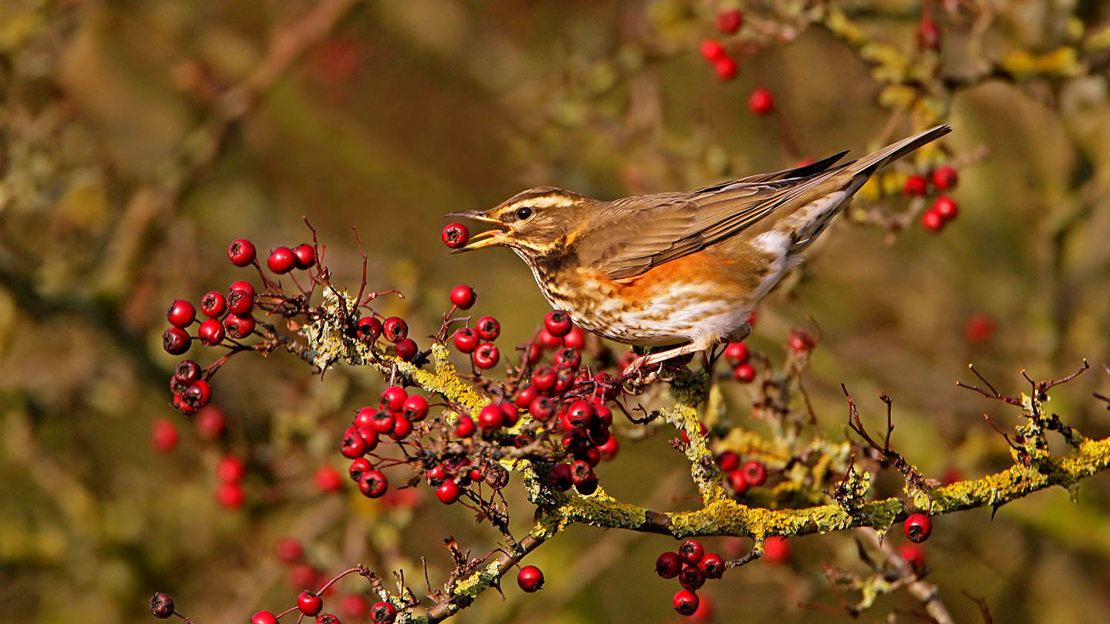
The redwing is one of the most iconic and recognisable birds to land in the UK for winter. It’s our smallest thrush species and migrates here from Scandinavia and Iceland towards the end of September, though a few pairs also nest in the UK too. It mostly eats berries including hawthorn, holly and rowan, but will also eat earthworms.
Redwings have a brown back, a cream chest and belly mottled with brown, a white eye stripe and beautiful rusty-red patches beneath each wing. They travel around in large flocks and call constantly to one another with a whistling tseep sound. The most magical time to listen to this call is on dark autumn nights, when redwings migrate unseen overhead.
Redwings live a nomadic lifestyle, moving from place to place as food runs out. Keep your eyes on berry trees in any garden, park or woodland, including the woods listed below.
You may also see redwings on farmland, foraging on the ground amongst flocks of another bird that migrates to the UK in winter, the fieldfare.
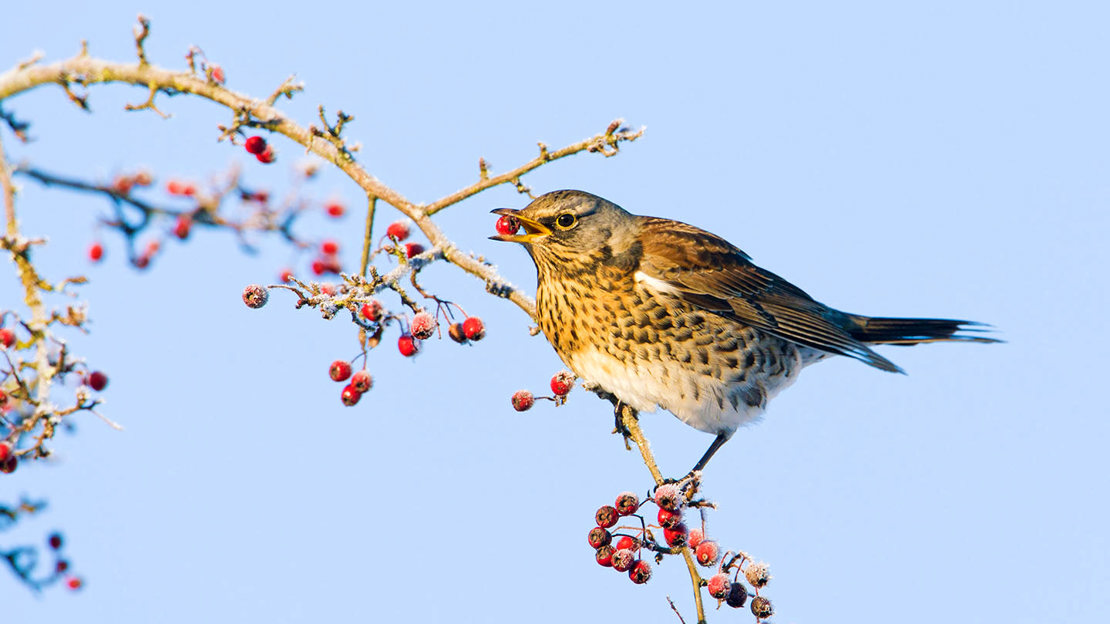
Flocks of fieldfares land in the UK about the same time as redwings, in early October. They fly here from Scandinavia, western Russia and eastern Europe, with huge numbers landing in the UK during bad berry years back home. They’re very social birds, spending the winter in flocks of 10–20 or even up to several hundred.
The fieldfare is a large thrush with a wingspan reaching around 42cm. It has a grey head, a chestnut back, a black tail and a spotted chest with a wash of ochre. You’ll probably hear a flock flying overhead before you see one – fieldfares make a loud, dry, chack chack call in flight.
Fieldfares can turn up in woods, like the ones below, and parks, but are more likely spotted in farmland and hedgerows. Though they’ll eat hawthorn and rowan berries when the ground gets really frozen, you’re more likely to spot one hunting for earthworms and other invertebrates.
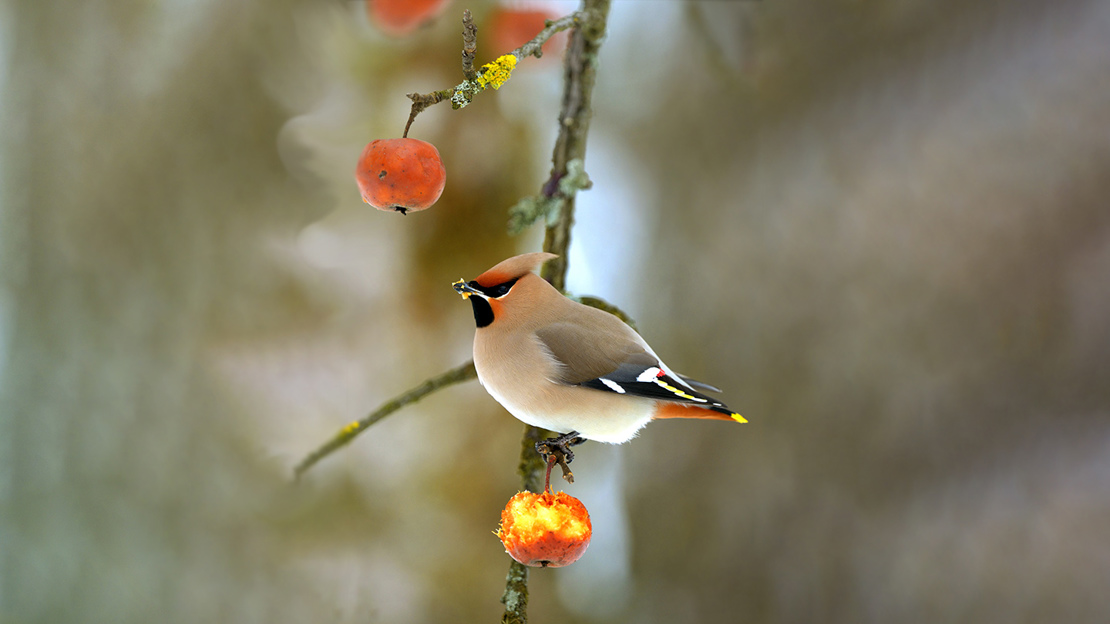
The waxwing is a very special visitor and not always guaranteed to turn up. The number of waxwings which visit the UK varies each winter, depending on how much food there is back in their home regions of northern Europe and western Russia. In some winters we see only a hundred arrive, but in others, they flock to the UK in their thousands as early as October. This is known as an irruption.
The waxwing is the New Romantic of the bird world, with a black eye mask outlined in white and a fabulous quiff. It's a beautiful pale brown colour and has a black bib, a yellow-tipped tail and bright red, waxy tips coating some of its wing feathers, which is where the bird gets its name. Size-wise, it’s about the same size as a starling (with a wingspan up to 35cm), and its call is a thin, reedy twitter.
Believe it or not, one of the best places to spot a flock of these flamboyant winter birds is a supermarket car park, urban garden or even a street planted with rowan, hawthorn or cotoneaster – waxwings’ favourite berries. In irruption years, you could spot them anywhere in the UK, but they’re less commonly reported in western regions.
Waxwings have been known to visit some of our woods, including Gorse Covert Mounds in Warrington.
Looking for ways to attract more wild visitors to your garden? Buy fruiting trees birds (and you) will love.
Visit our shop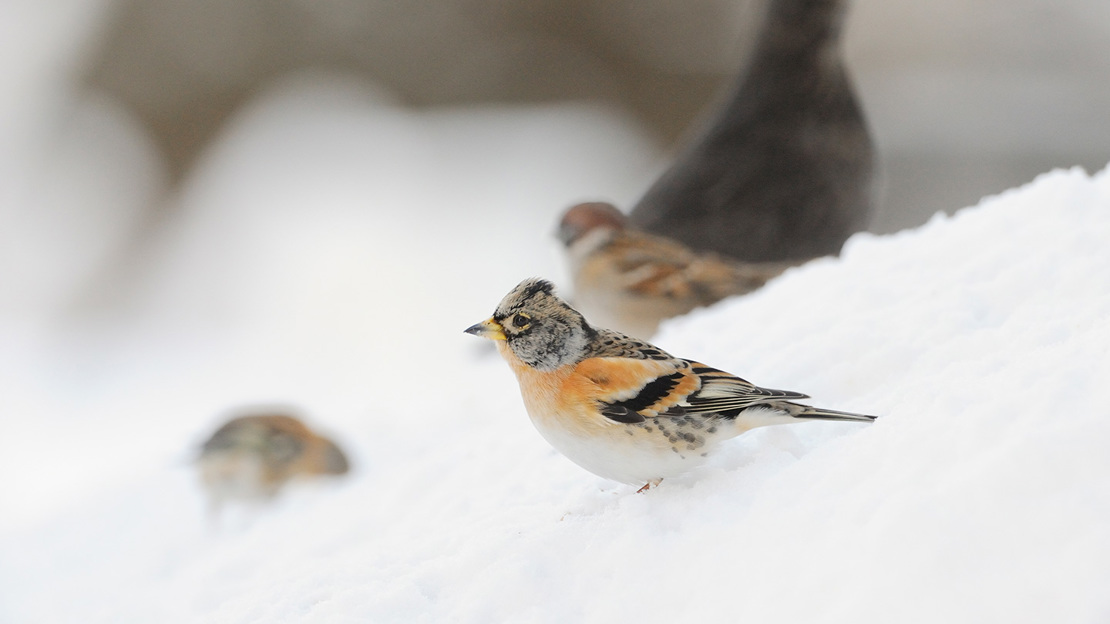
Like waxwings, bramblings are another winter bird whose numbers can fluctuate in the UK. It all depends on the availability of beech mast in their breeding grounds in Finland, Scandinavia and Russia. They usually arrive here from late September onwards – often in their thousands but sometimes in their millions!
Bramblings tend to travel in mixed flocks with other finches, including the very similar-looking chaffinch. They’re about the same size as a chaffinch, with a wingspan up to 26cm, but have slightly different colouration. The brambling has a white rump, a warm orange chest and a grey-brown to black head. Their short, nasal call gives them away too.
Look for flocks of bramblings in woodlands, especially those with beech trees, like the ones below. When food runs out or is covered with snow in bad winters, they’ve been known to visit garden bird feeders.
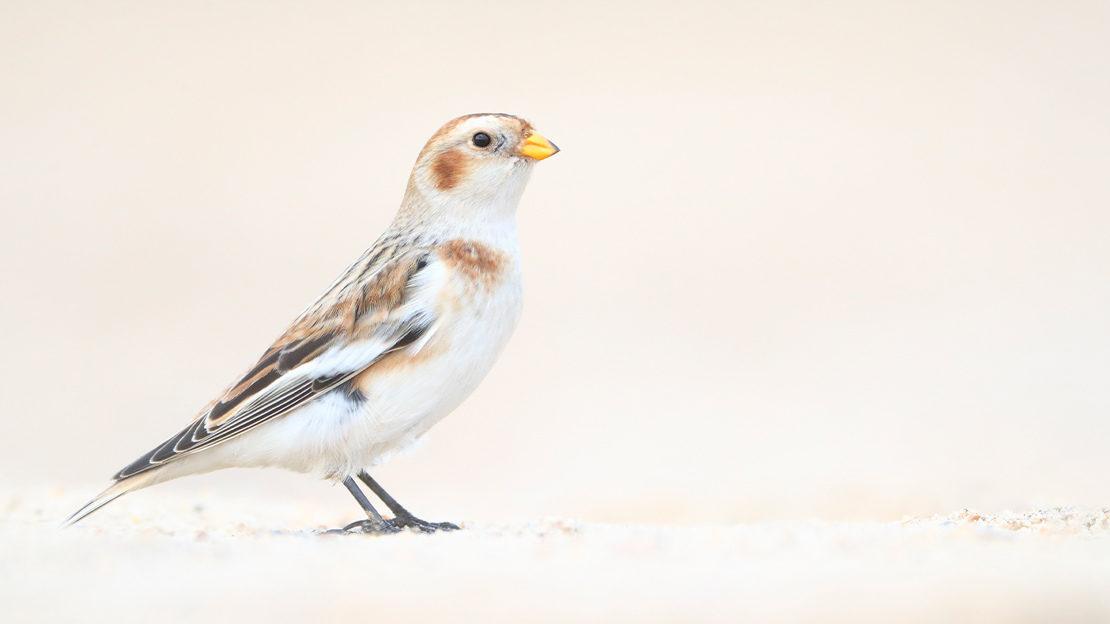
Though we do now have around 60 pairs of breeding snow buntings in the UK, they're confined to Scotland’s highest mountains and you're more likely to see our winter visitors. Up to 15,000 snow buntings migrate south from the arctic regions each year.
The snow bunting is a large songbird with a wingspan of around 38cm. It has a white belly with buff, sandy feathers on its upperparts. It also has black wingtips and white patches on its wings, making it easy to recognise in flight. Its call ranges from a clear chew to a husky, rolling rattle, or a sharp chi-tik whilst foraging on the ground.
The best place to look for snow buntings in winter is on the beaches of the north and east coasts of the UK, where they forage amongst rocks and sand for insects. You could also spot them on farmland or in the uplands on the hunt for seeds.
The woods below sit close to some mountains and coastal areas where you could see snow buntings. Why not make a day of it and pay them a visit?
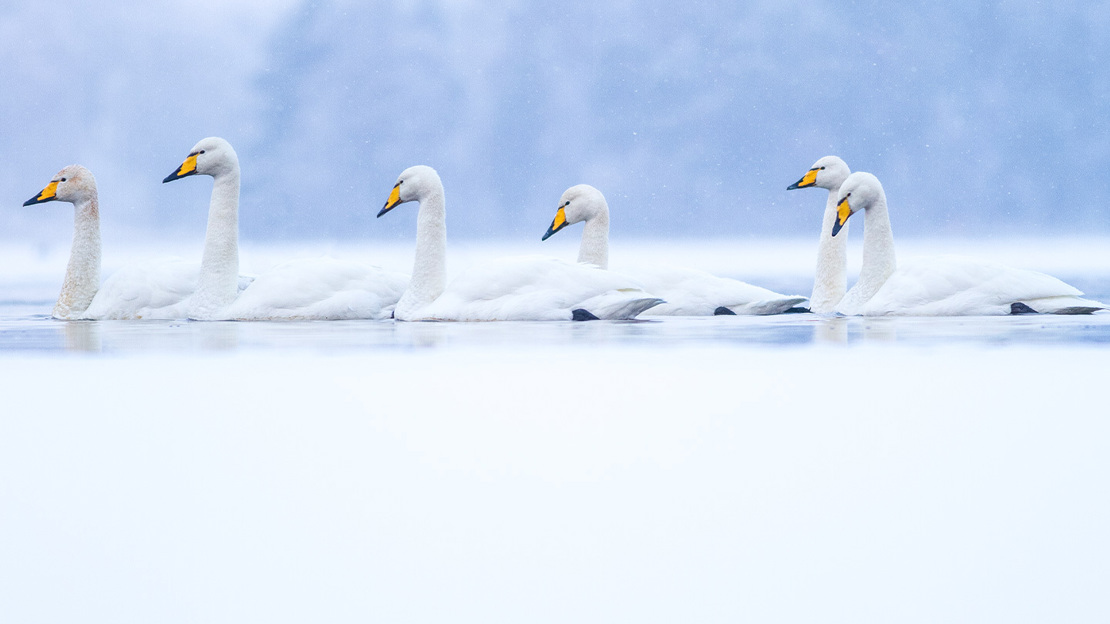
The whooper swan is another bird that has started breeding in the UK in the far north of Scotland, but apart from this small number of exceptions, it is still largely a winter visitor. It spends the summer in Iceland before migrating to our shores in autumn.
The whooper swan is almost as big as a mute swan, with a wingspan up to 235cm! It’s white with black legs, and a black beak which has a large, yellow, triangular patch at the base. The whooper swan’s call is described as a deep hoop or whoop-whoop.
They’ll often feed in agricultural fields during the day, eating crops including leftover potatoes and grain. They’ll also eat aquatic plants and grass, so keep an eye out for whooper swans in wetlands and coastal areas too.
Here are some beautiful woods close to some of the best spots to see whooper swans in the UK. Make a day of it and see what other winter birds you could encounter.
Keep our pocket-sized identification guide to hand on your next walk.
Buy yours now